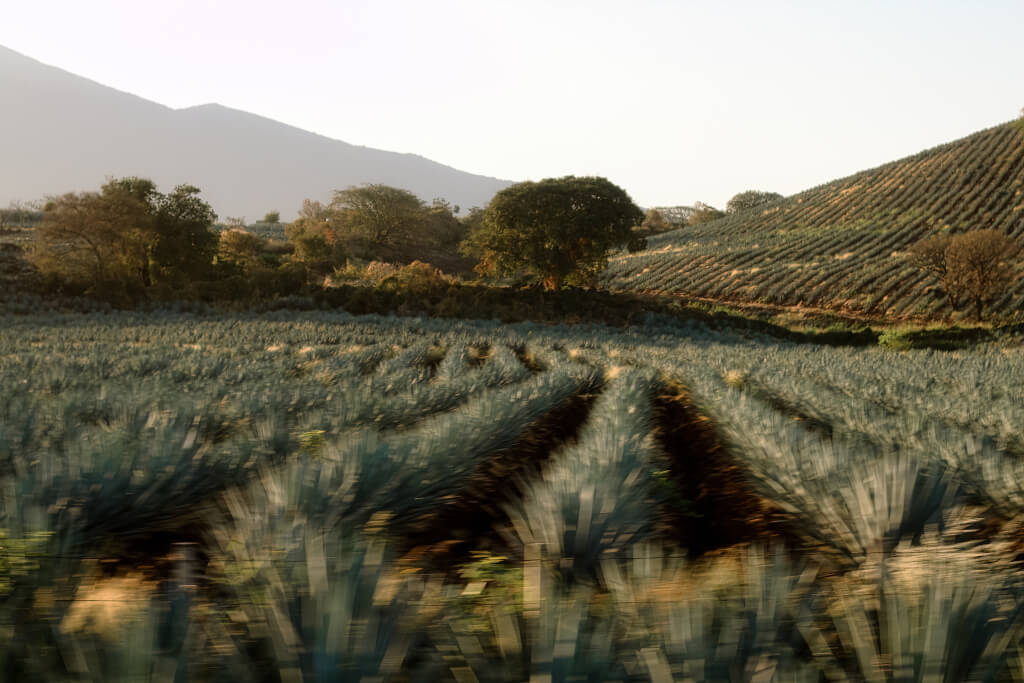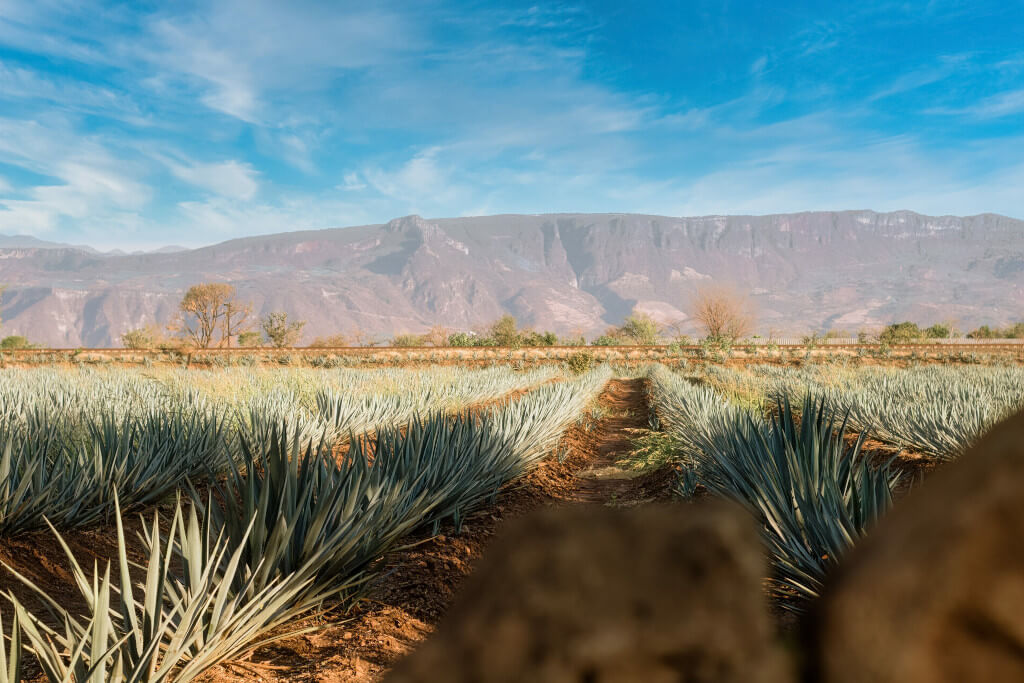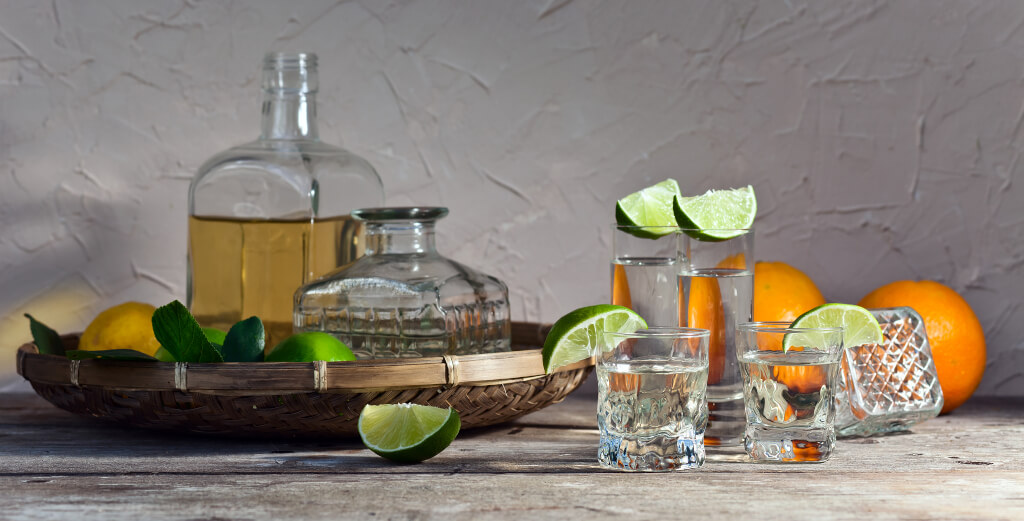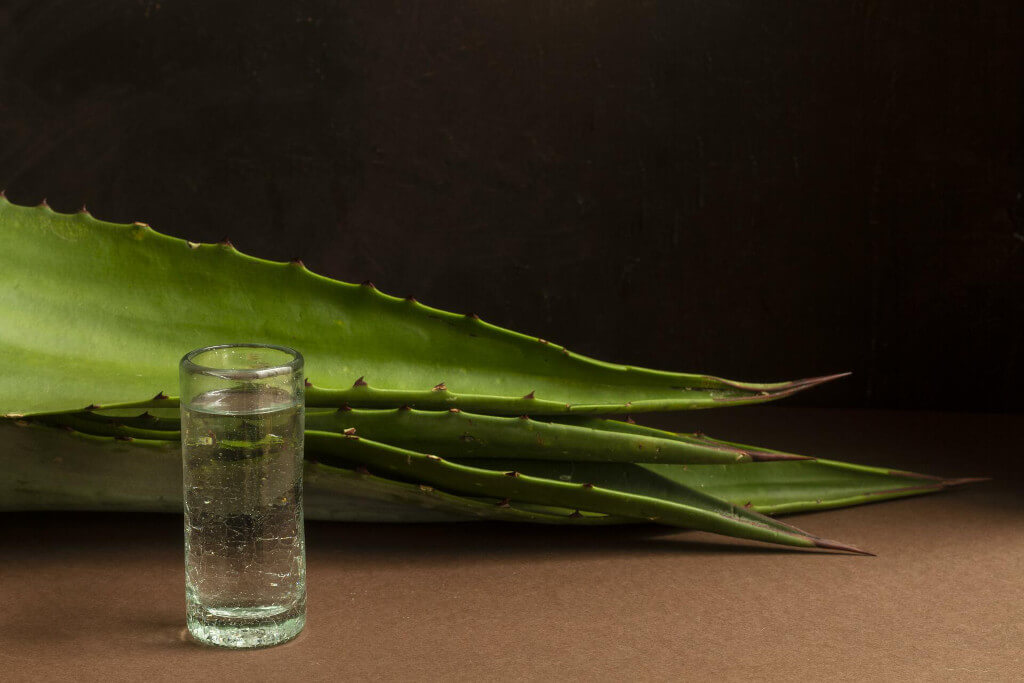While the history of tequila goes back to at least the year 250, modern manufacture in Mexico only began in the 1600s. Tequila has become a major industry and source of national pride for Mexico.
Tequila: What Is It?
The Weber blue agave plant is used to produce the distilled alcohol known as tequila. Tequila is a versatile liquor that shows up in many classic drinks including the Margarita, Paloma, and Tequila Sunrise. Only in Mexico and in specific locations (Jalisco, Nayarit, Guanajuato, Michoacán, and Tamaulipas) is tequila legally produced, as mandated by the Mexican government.
Plant Agave
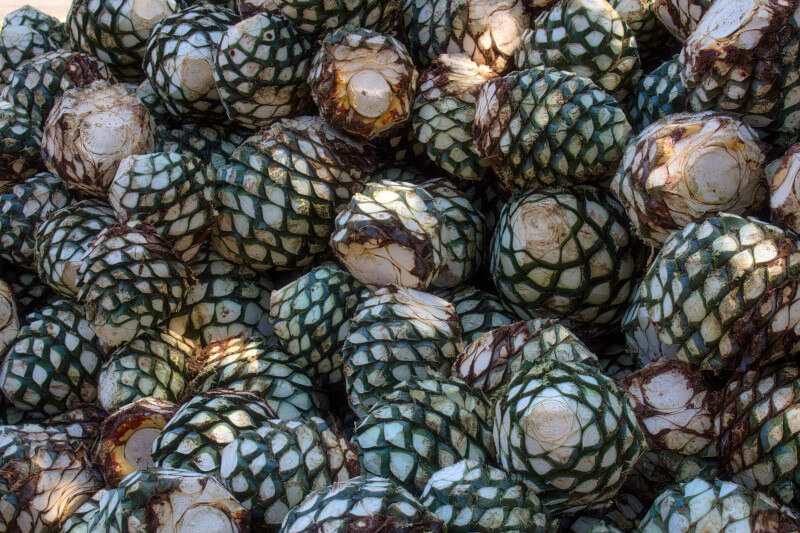
Weber Blue Agave, or Agave tequilana in its scientific form, is a succulent plant that grows naturally in Mexico and is used to make the spirit tequila. It takes between 8 and 12 years to reach maturity and has sharp, pointed leaves that are often a blue-gray colour. Growing to a maximum height of 1.5 to 2 metres, the Weber Blue Agave develops a single flowering stalk at the end of its life that is covered in yellow flowers. However, tequila agave is taken before it flowers because the plant’s vitality is harnessed in the pia, or centre.
“Hijuelos” or “pups” are the juvenile agave plants that are planted at the start of the agricultural process. These require several years of care after planting in well-drained, sandy soil before they reach full maturity. During this time, jimadores, or agave farmers, pay close attention to each plant in their fields, pulling out any weeds that could starve the agaves of vital nutrients.
Agaves Are Grown and Tequila is Made Mostly in Jalisco, Mexico
Los Altos and Tequila Valley are two of its most important agricultural regions. Sweeter and fruitier tequilas are produced in Los Altos, or the highlands, due to the region’s red, iron-rich soil and cooler, wetter climate. Tequila comes from agave plants that have more herbal and earthy flavours since they grow in the Tequila Valley’s volcanic soil and warmer environment with less rainfall. The subtle distinctions between these two places demonstrate the impact of terroir on the flavour of tequila.
The Production Process
Maturation of Agave
Agave plant maturation is a crucial step in making tequila. The agave plant, in contrast to many other crops, takes 8-12 years to achieve full maturity. During this time, the plant stores an abundance of sugars in its pia, or heart, which will later be used in the tequila fermentation process. The succulent leaves of an agave plant have reached maturity when their colour has changed and they have begun to wilt. The knowledge of when to harvest is passed down from generation to generation and is essential for producing premium tequila.
The Jimadores’ Crucial Part
Jimadores are the master agave farmers that are essential to the production of tequila. They are professional workers who ensure that the agave plants remain healthy and free of pests and illnesses as they mature throughout time. To ensure the highest possible sugar concentration in the pia, it is the jimadores who decide when the agave has reached maturity and can be harvested. Knowledge of the plant’s life cycle and extensive practise are necessary for this. After the pia has been gathered, the leaves are removed and it is sent off to be baked and processed.
Equipment Used in the Harvest
Agave harvesting is a time-consuming, manual procedure that makes extensive use of antique equipment. A jimador’s main weapon is the coa de jima, also known simply as a coa. This long, flat-bladed instrument is used for both tending and collecting agave plants. The jimador will use the coa, which is a sharp knife with a rounded tip, to remove the long, thorny leaves of the plant. The size and resilience of the agave necessitate an extremely sharp COA, which is sometimes sharpened several times during the harvest. To get the pia to the distillery, it must first be pulled out of the ground using the COA’s blade.
Preparation and Baking
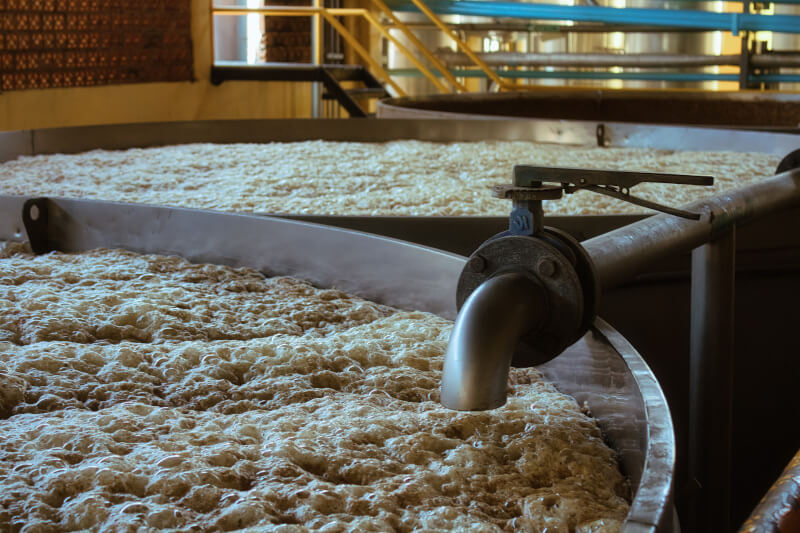
Pias Are Traditionally Baked in an Agave-based Oven
The horno, a traditional oven used to bake agave pias, is an essential part of making tequila. The horno is constructed from brick or stone and is used to slowly simmer the gathered agave pias for several days. The complex carbohydrates in the pias are broken down into simpler sugars during the lengthy roasting process, making them available for fermentation.
Affect on the Flavour of Tequila
The flavour of the finished product is heavily dependent on the technique used to cook the agave. The natural sugars caramelise throughout the long roasting time in a traditional horno, giving the final product a sweeter, earthier flavour. This crucial differential is what gives tequila its distinctive flavour and sets it apart from other spirits.
Traditional VS. Contemporary Cooking
Large stainless steel autoclaves have mostly replaced the old hornos in the modern, industrial method of producing tequila. Cooking agave pias in an autoclave takes only a few hours, huge time savings compared to the conventional process. While this improves productivity, others claim that the rich flavour developed during a lengthy roast in a horno is lost as a result.
What Happens During Fermentation
Agave Syrup Extraction
After the agave pias have been cooked, the sweet juice, known as aguamiel or honey water, is extracted by crushing the cooked agave. The carbohydrates in this juice are what make fermentation possible. Both ancient tahonas, which are giant stone wheels, and modern, mechanical crushers can be used in the extraction process.
Lactic Acid Bacteria
The freshly pressed agave nectar is taken to the vats of fermentation, where wild yeast is added. It takes the yeast from a week to a month to ferment the agave juice and turn its sugars into alcohol. Mosto, an agave beer with a low alcohol content, is the end product.
Tequila’s Flavour and the Importance of Fermentation
The flavour of finished tequila is heavily influenced by the fermentation process. The distinct flavour of tequila is a result of many factors, including the yeast employed, the length of fermentation, and the temperature and humidity of the fermentation room. Fruity, spicy, or earthy flavours can be added to tequila by using different yeast strains. In addition, tequila can acquire distinctive regional flavours through open-air fermentation, in which wild yeasts from the area are used in the fermentation process.
Distillation Techniques
Alcohol Refinement
Distillation is a crucial step in making tequila since it is the process that removes impurities and concentrates the alcohol created during fermentation. The technique of distillation is used not only to raise the alcohol content of the agave juice but also to extract the greatest flavours and fragrances from the juice by skimming off the “head” and “tail” and keeping the “heart.”
Comparing Column Stills and Pot Stills
Distillation typically takes place in either a pot still or a column still. Traditional methods of distilling spirits, such as tequila, use pot stills, also called alembic stills. They’re more labor-intensive and result in less output, but they allow for better control over the process. Column stills, on the other hand, are less common but more efficient and can distil a larger quantity of spirit. They also make a spirit that’s stronger in alcohol content and less flavorful overall.
Distillation’s After-Effects
The quality of tequila varies substantially depending on how many times it is distilled, often once, twice, or three. Single-distilled tequila typically retains more of the agave plant’s inherent flavour and sometimes has more contaminants. The industry standard for making tequila, double distillation, produces a clearer, cleaner spirit with well-rounded agave notes. While the purity and smoothness of triple-distilled tequilas are unmatched, some claim that the agave flavour is lost in the process.
Biological Ageing
Tequila Varieties
Blanco, reposado, aejo, and extra aejo are the four basic categories of tequila, each representing a different length of aging. To preserve the most authentic agave flavours, Blanco (also known as silver or white tequila) is often not matured before bottling. “Rested” tequila, or reposado, is matured for anything from two months to a year in oak barrels, during which time it takes on a faint oak flavour. Aejo tequila has matured for a minimum of one year and typically takes three. Extra aejo, or “ultra-aged,” tequila has been aged for at least three years and has an amber hue and intense caramel flavours.
Wooden Barrels and Their Importance
Tequila is aged in wooden barrels, a crucial step in the process. They impart additional flavours and aromas to the tequila as well as allow the spirit to age and soften. Typically, American or French oak barrels are utilised, each imparting its distinct flavour notes including vanilla, caramel, and spices.
Age-Related Effects
Tequila’s colour, flavour, and aroma all improve significantly with age. Aging tequila in wooden barrels imparts to the spirit a richer colour, more robust flavour, and a more fragrant scent. Tequila ages from blanco, a clear, sharp-edged spirit, to reposado, a mellow, delicately flavoured tequila, to aejo, or extra aejo, a dark, nuanced, and silky tequila. Tasting and smelling the progression of age in a bottle of tequila is a fascinating adventure for connoisseurs.
Tequila Bottling
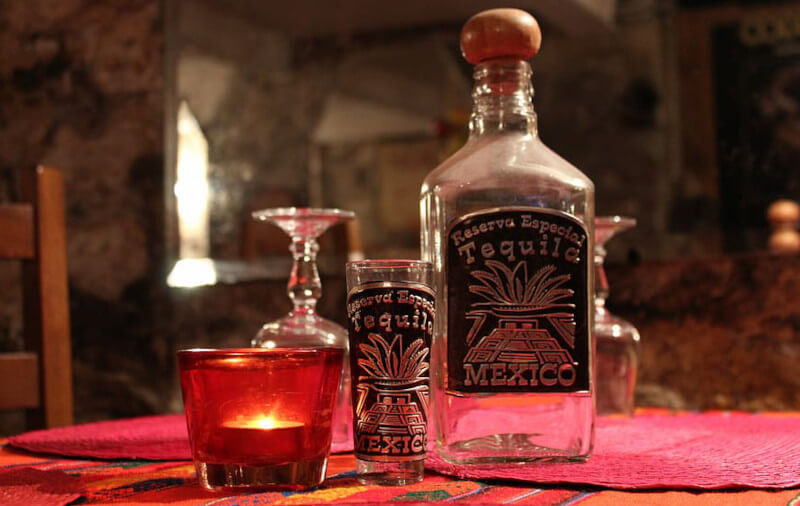
Packaging and Labelling Procedures
After an appropriate amount of time has passed for the tequila to age, it can be bottled and given its final label. First, the tequila is filtered to eliminate any sediment, and then it is diluted to the appropriate strength, which is typically 35%-55% alcohol by volume. The next step is to put the liquid into bottles, which can be done manually or automatically depending on the production volume. The bottles are then labelled and sealed (with a cork or screw top). The NOM number (a number used to identify each tequila distillery) and the percentage of agave used must be displayed on the bottle’s label.
Controls for Quality
Tequila production relies heavily on rigorous quality control measures. Each batch is inspected thoroughly before distribution to guarantee uniformity and quality control. The alcohol concentration, flavour, and aroma must all be checked, and the product must pass a visual inspection. All bottles are tested to guarantee they live up to the standard set by the brand.
Certification of Tequila
Certifications for tequila are reliable proof of its genuineness and quality. The most widely recognised is the CRT (Consejo Regulador del Tequila) seal, which guarantees that the tequila has been produced by Mexican law. This involves being produced entirely from blue agave and in the specified region. Other certifications, like organic and kosher, attest to the fact that the tequila was made by certain ethical and ecological norms.
Production of Tequila: Artisanal VS. Industrial
The style and quality of tequila can vary greatly depending on the process by which it was made. The agave is cooked slowly in brick ovens or pits, then crushed using a tahona (a big stone wheel), and finally fermented and distilled in tiny batches. This time-consuming method is thought to result in tequila with a deeper, more nuanced flavour.
However, in commercial operations, the agave is typically cooked in enormous autoclaves before being mechanically crushed and distilled in columns. While these techniques are faster and create bigger quantities of tequila, the finished product may lack the richness and depth found in tequila made using more conventional techniques.
How the Manufacturing Process Affects Product Quality and Flavour
The flavour and quality of tequila are significantly impacted by its production process. The cautious, deliberate manufacturing of artisanal tequilas results in liquors with a more pronounced agave flavour and a depth of character. It’s possible that industrial tequilas, while nonetheless excellent, have a simpler, more uniform flavour profile. This isn’t always a bad thing, especially if it makes the tequila easier for cocktail novices to enjoy. Those looking for the complex flavours of authentic tequila, however, tend to favour bottles made in small batches by skilled artisans.
The process of making tequila is steeped in history, art, and craft from the colourful agave fields of Jalisco to the carefully constructed bottles on store shelves. Each phase, from waiting for the agave plant to ripen and be harvested to cooking and fermenting to distilling to patiently ageing, adds to the final product’s distinctive flavour and character. The hard work and skill required to go from the farm to the bottle are evident in every drop of tequila.
Tasting tequila is like taking a journey through time, with each bottle carrying its own unique story. Our investigation has revealed that the various processes involved in making tequila each contribute significantly to the final product’s flavour, complexity, and value. Enjoying a blanco in a traditional Margarita, a reposado on the rocks, or a finely aged aejo neat all reveal unique facets of this alluring liquor.
Remembering the history and culture of Mexico is essential as we explore the world of tequila. There’s a history behind every bottle, a tale of the jimadores and master distillers who laboured for years to offer us the true flavour of Mexico. Take your time, enjoy the many tequilas for what they are, and don’t forget to drink sensibly while you sample the many varieties out there. After all, there’s just as much value in the process as there is in the final product when it comes to the art of tequila creation.

